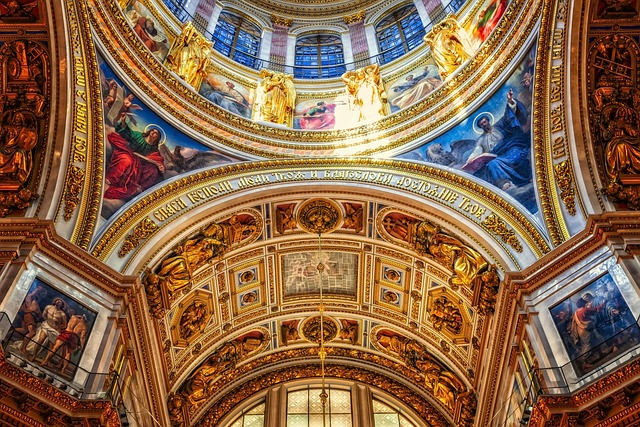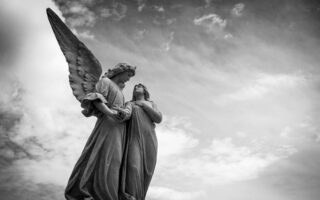Orthodoxy, also known as Eastern Orthodoxy, is one of the three major branches of Christianity, alongside Roman Catholicism and Protestantism. It traces its origins back to the early Christian Church and the apostles, particularly the apostles Peter and Paul. The Orthodox Church emerged as a distinct entity in the 5th century, following the Council of Chalcedon in 451 AD, which marked a significant theological and doctrinal split between the Eastern and Western Christian traditions. Since then, Orthodoxy has developed its own unique liturgical practices, theological teachings, and ecclesiastical structure, becoming the dominant form of Christianity in Eastern Europe, the Balkans, and parts of the Middle East. Today, Orthodoxy continues to be a vibrant and influential religious tradition, with millions of adherents worldwide.
Table of Contents
Origins of Orthodox Christianity
Orthodox Christianity, with its rich history and deep-rooted traditions, has captivated the hearts and minds of millions of believers around the world. But have you ever wondered how this ancient faith came to be? In this article, we will delve into the origins of Orthodox Christianity and explore the fascinating journey that led to its establishment.
To understand the beginnings of Orthodox Christianity, we must travel back in time to the early days of the Christian faith. It all started with Jesus Christ, the central figure of Christianity, who lived in the first century AD. Jesus’ teachings and his sacrificial death on the cross laid the foundation for what would later become the Christian religion.
After Jesus’ crucifixion and resurrection, his disciples, known as the apostles, spread his message throughout the Roman Empire. These apostles, guided by the Holy Spirit, established Christian communities and shared the teachings of Jesus with both Jews and Gentiles. This early period of Christianity is often referred to as the Apostolic Age.
As the Christian faith grew, different interpretations of Jesus’ teachings emerged, leading to various sects and factions within the early Christian community. One of these factions was the Orthodox Church, which traces its roots back to the apostles themselves.
The term “Orthodox” comes from the Greek words “orthos” meaning “right” or “correct,” and “doxa” meaning “belief” or “glory.” Thus, Orthodox Christianity can be understood as the “correct belief” or the “true glory” of the Christian faith.
The Orthodox Church’s claim to apostolic succession is a crucial aspect of its identity. According to this belief, the bishops of the Orthodox Church can trace their lineage back to the original apostles, ensuring the continuity of the faith from the time of Christ.
In the early centuries of Christianity, the Orthodox Church faced numerous challenges and controversies. One of the most significant disputes was the Great Schism of 1054, which resulted in the division between the Eastern Orthodox Church and the Roman Catholic Church. This schism was primarily caused by disagreements over theological doctrines, liturgical practices, and the authority of the Pope.
Despite these challenges, the Orthodox Church continued to thrive and spread its influence throughout the Byzantine Empire and beyond. The Byzantine Empire, with its capital in Constantinople (modern-day Istanbul), became the center of Orthodox Christianity and played a crucial role in shaping its development.
Throughout its history, the Orthodox Church has preserved its ancient traditions and liturgical practices. The Divine Liturgy, the central worship service of the Orthodox Church, has remained largely unchanged for centuries, connecting believers to the early Christian worship experience.
Today, Orthodox Christianity is not limited to the Byzantine Empire or any specific region. It has spread to all corners of the globe, with vibrant Orthodox communities in Eastern Europe, the Middle East, Africa, Asia, and even the Americas.
In conclusion, the origins of Orthodox Christianity can be traced back to the apostolic era, when Jesus’ disciples spread his teachings throughout the Roman Empire. The Orthodox Church emerged as one of the early factions within the Christian community, emphasizing its claim to apostolic succession and the preservation of ancient traditions. Despite facing challenges and divisions throughout history, Orthodox Christianity has endured and continues to thrive as a global faith. Its rich history and deep-rooted traditions make it a fascinating and influential branch of Christianity.
Key Figures in the Development of Orthodox Christianity

Orthodox Christianity, with its rich history and deep-rooted traditions, has been a significant force in shaping the religious landscape for centuries. But have you ever wondered how it all began? In this article, we will explore the key figures who played a pivotal role in the development of Orthodox Christianity.
One of the most influential figures in the early days of Orthodox Christianity was Saint Peter, the apostle chosen by Jesus Christ himself. Saint Peter, known as the “rock” upon which the church was built, laid the foundation for the faith and established the first Christian community in Rome. His teachings and leadership set the stage for the growth of Christianity and the eventual emergence of the Orthodox Church.
Another key figure in the development of Orthodox Christianity was Saint Paul, who tirelessly spread the message of Christ throughout the Roman Empire. His missionary journeys and epistles played a crucial role in the expansion of the early Christian community. Saint Paul’s writings, which are now an integral part of the New Testament, continue to guide Orthodox believers to this day.
As the Roman Empire embraced Christianity, the influence of key figures such as Saint Athanasius and Saint Basil the Great became increasingly significant. Saint Athanasius, known as the “Father of Orthodoxy,” played a crucial role in defending the divinity of Christ against the Arian heresy. His unwavering commitment to the orthodox faith laid the groundwork for the development of Orthodox theology.
Saint Basil the Great, on the other hand, was instrumental in shaping the monastic tradition within Orthodoxy. His teachings on asceticism and communal living formed the basis for the monastic communities that would flourish throughout the Byzantine Empire. Saint Basil’s emphasis on prayer, contemplation, and self-discipline continues to inspire Orthodox monks and nuns to this day.
The Byzantine Empire, with its capital in Constantinople, became the center of Orthodox Christianity in the medieval period. One of the key figures during this time was Emperor Justinian I, who sought to consolidate the faith and establish a unified Orthodox Church. Under his rule, the Hagia Sophia, one of the most iconic Orthodox churches, was built, serving as a symbol of the empire’s commitment to the faith.
In the modern era, the Russian Orthodox Church has played a significant role in the development and spread of Orthodox Christianity. Key figures such as Saint Sergius of Radonezh and Saint Seraphim of Sarov were instrumental in reviving the spiritual life of the Russian people during times of political and social upheaval. Their teachings on prayer, repentance, and humility continue to inspire Orthodox believers worldwide.
Today, Orthodox Christianity is practiced by millions of people around the world, with vibrant communities in countries such as Greece, Russia, Serbia, and Romania. The key figures we have discussed in this article have left a lasting legacy, shaping the theology, spirituality, and traditions of the Orthodox Church.
In conclusion, the development of Orthodox Christianity was shaped by a diverse range of key figures who dedicated their lives to spreading the message of Christ and preserving the orthodox faith. From the apostles to the Byzantine emperors and modern-day saints, their contributions have left an indelible mark on the history of Orthodox Christianity. As we continue to embrace this ancient faith, let us remember and honor these key figures who paved the way for our spiritual journey.
Doctrinal Differences between Orthodox Christianity and other Christian Denominations
Orthodox Christianity, also known as Eastern Orthodox Church, is one of the oldest Christian denominations in the world. It traces its roots back to the early days of Christianity, when the apostles spread the teachings of Jesus Christ. However, over time, doctrinal differences emerged between Orthodox Christianity and other Christian denominations, leading to the distinct beliefs and practices that define the Orthodox faith today.
One of the key doctrinal differences between Orthodox Christianity and other Christian denominations is the understanding of the Holy Trinity. While all Christians believe in the Trinity – the Father, the Son, and the Holy Spirit – Orthodox Christians emphasize the unity of the three persons. They believe that the Father, Son, and Holy Spirit are co-eternal and consubstantial, meaning they share the same essence. This differs from some other Christian denominations that may place more emphasis on the individuality of each person of the Trinity.
Another doctrinal difference lies in the understanding of salvation. Orthodox Christianity teaches that salvation is a lifelong process of becoming more like Christ, known as theosis or deification. It is a transformative journey that involves participating in the life of the Church, receiving the sacraments, and striving for holiness. Other Christian denominations may have different views on salvation, such as emphasizing faith alone or a one-time conversion experience.
The veneration of icons is another distinctive aspect of Orthodox Christianity. Icons are sacred images of Christ, the Virgin Mary, and the saints. Orthodox Christians believe that icons are not mere paintings or decorations but windows into the heavenly realm. They serve as aids to prayer and reminders of the presence of God and the saints. This practice sets Orthodox Christianity apart from some other Christian denominations that may have reservations about the use of religious images.
The role of tradition is also central to Orthodox Christianity. Orthodox Christians believe in the importance of preserving and passing down the teachings and practices of the early Church. They view tradition as a living and dynamic source of spiritual wisdom, guided by the Holy Spirit. This emphasis on tradition can be seen in the liturgical worship of the Orthodox Church, which has remained largely unchanged for centuries. In contrast, some other Christian denominations may place more emphasis on individual interpretation of Scripture or adapting worship practices to contemporary culture.
Despite these doctrinal differences, it is important to note that Orthodox Christianity shares many core beliefs with other Christian denominations. All Christians believe in the divinity of Jesus Christ, his death and resurrection for the salvation of humanity, and the importance of love, compassion, and forgiveness. While the specific expressions of these beliefs may vary, the fundamental message of the Gospel remains the same.
In conclusion, the doctrinal differences between Orthodox Christianity and other Christian denominations have shaped the unique beliefs and practices of the Orthodox faith. From the understanding of the Holy Trinity to the veneration of icons and the emphasis on tradition, Orthodox Christianity offers a distinct perspective on the Christian faith. However, it is essential to recognize that despite these differences, all Christians share a common foundation in the teachings of Jesus Christ and the hope of salvation through his grace.
Influence of Orthodox Christianity on Art and Architecture
Orthodox Christianity has had a profound influence on art and architecture throughout history. From the intricate mosaics of Byzantine churches to the awe-inspiring domes of Russian cathedrals, the visual expressions of this ancient faith have captivated and inspired people for centuries.
The roots of Orthodox Christianity can be traced back to the early days of Christianity itself. As the Roman Empire expanded, so did the spread of Christianity, reaching as far as the eastern regions of the empire. It was in these eastern lands that the foundations of Orthodox Christianity were laid.
One of the most significant contributions of Orthodox Christianity to art and architecture is the use of icons. Icons are religious images that serve as windows into the divine. They are not mere decorations, but rather sacred objects that are venerated and used as aids in prayer and meditation. The use of icons in Orthodox worship can be traced back to the early centuries of Christianity, and their influence on art is undeniable.
The Byzantine Empire, with its capital in Constantinople (modern-day Istanbul), became the center of Orthodox Christianity and the birthplace of Byzantine art and architecture. Byzantine churches were adorned with elaborate mosaics depicting scenes from the Bible and the lives of saints. These mosaics were not only beautiful but also served a didactic purpose, teaching the faithful about the stories and teachings of their faith.
The use of domes is another distinctive feature of Orthodox architecture. Inspired by the domed basilicas of ancient Rome, Byzantine architects developed a unique style that emphasized the centrality of the dome. The dome became a symbol of heaven, representing the celestial realm and the presence of God. Russian Orthodox churches, in particular, are known for their onion-shaped domes, which add a sense of grandeur and spirituality to the architectural landscape.
Orthodox Christianity also had a profound impact on the development of religious painting. The tradition of icon painting, with its strict rules and techniques, has been passed down through generations of artists. Icon painters, known as iconographers, are not simply artists but also theologians, as their work is deeply rooted in the teachings and traditions of the Church. The icons they create are not meant to be realistic representations but rather spiritual windows that connect the viewer with the divine.
The influence of Orthodox Christianity on art and architecture extends beyond the Byzantine Empire. As the faith spread to other regions, it assimilated local artistic traditions, resulting in unique expressions of Orthodox art. In Russia, for example, the iconography of the Orthodox Church merged with traditional Russian folk art, giving rise to a distinctive style known as Russian icon painting.
Today, the influence of Orthodox Christianity on art and architecture can still be seen in churches and cathedrals around the world. From the stunning frescoes of Serbian monasteries to the intricate woodwork of Ethiopian churches, the visual language of Orthodox Christianity continues to inspire and uplift.
In conclusion, the influence of Orthodox Christianity on art and architecture is undeniable. From the use of icons to the distinctive domes of Orthodox churches, the visual expressions of this ancient faith have left an indelible mark on the artistic and architectural landscape. Whether through mosaics, frescoes, or iconography, Orthodox Christianity continues to inspire and connect people with the divine.
Conclusion
In conclusion, Orthodox Christianity originated from the early Christian Church and developed into a distinct branch of Christianity. It traces its roots back to the apostles and the teachings of Jesus Christ. Over time, it spread throughout the Byzantine Empire and beyond, becoming a major religious tradition in Eastern Europe, the Middle East, and parts of Africa. The Orthodox Church has its own unique liturgical practices, theological beliefs, and hierarchical structure, distinguishing it from other Christian denominations. Today, Orthodox Christianity continues to be practiced by millions of believers worldwide.
For licensing reasons, we must provide the following notice: This content was created in part with the help of an AI.


